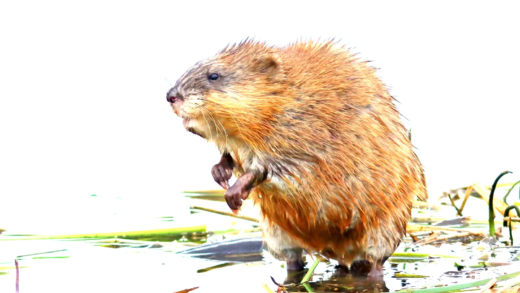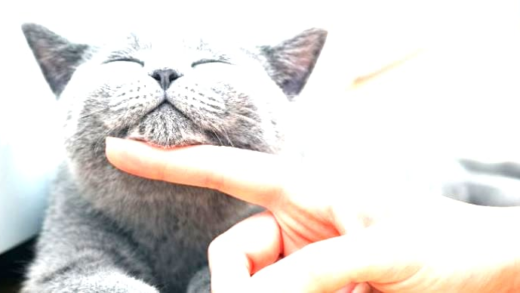This article clarifies the difference between venomous and poisonous organisms, detailing how venomous creatures deliver toxins, examples of both types, associated risks, physiological effects of bites, common misconceptions, identification tips, ecological benefits, and emergency response steps.
What’s the Deal? Venomous vs Poisonous: Understanding the Difference
Venomous vs poisonous: the terms often confuse many. The key difference lies in how these substances affect other organisms. Venomous creatures actively deliver their toxins through bites or stings. In contrast, poisonous organisms release toxins when they are consumed or touched. Understanding this distinction is crucial for recognizing the risks associated with various species.
For instance, the infamous rattlesnake is venomous; it injects venom via its fangs when it bites. On the other hand, the toxic poison dart frog is poisonous. Touching it or consuming it can lead to severe harm. This fundamental difference highlights the diverse strategies animals use for survival.
Furthermore, the risks involved with venomous and poisonous creatures also vary. While venomous animals can pose an immediate threat through their bites, poisonous organisms may have long-term effects if ingested. It’s essential to educate oneself on these differences to avoid dangerous encounters in nature.
How Do Venomous Creatures Deliver Their Venom?
Understanding how venomous creatures deliver their venom is vital. Venomous animals possess specialized anatomical structures that allow them to inject venom into their victims. This process often occurs through fangs, spines, or stingers, depending on the species.
For example, a spider uses its fangs to pierce its prey, injecting venom that immobilizes it. Similarly, a scorpion employs its stinger to deliver venom. The venom can cause paralysis, pain, or even death, showcasing the efficiency of these delivery methods.
Moreover, different species have evolved various mechanisms to ensure their survival. Some venomous snakes, like cobras, can deliver venom even from a distance by spitting it at threats. Others, like the venomous cone snail, use a harpoon-like tooth to inject venom into their prey. This fascinating array of strategies underscores the adaptability of venomous creatures in their environments.
Examples Galore: Venomous and Poisonous Creatures
Identifying venomous and poisonous creatures can be life-saving. Here are notable examples to illustrate the differences:
- Venomous Creatures:
- King Cobra: Injects potent neurotoxic venom.
- Black Widow Spider: Delivers venom that causes severe pain and muscle cramps.
- Stonefish: Possesses venomous spines that can inflict excruciating pain.
- Poisonous Creatures:
- Poison Dart Frog: Toxic skin that can be lethal if ingested.
- Deadly Nightshade: Contains toxic berries that can cause hallucinations and death.
- Pufferfish: Has potent toxins in its organs that are harmful if eaten.
These examples highlight the significant differences between venomous and poisonous organisms. Recognizing them can help individuals avoid dangerous encounters and appreciate the complexities of nature.
Assessing the Risks: Harm from Venomous and Poisonous Species
When discussing venomous vs poisonous organisms, understanding the risks they pose is essential. Venomous creatures can inflict immediate harm through bites or stings, while poisonous ones often require ingestion or contact to cause damage. The danger varies significantly across species.
- Immediate Threat: Venomous animals like snakes and spiders can deliver potent toxins directly into their victims. A bite from a Black Mamba can lead to paralysis or death in a matter of hours if untreated.
- Delayed Harm: Poisonous organisms, such as the Poison Dart Frog, can lead to serious health issues if consumed. The effects may not be immediate, but they can be equally deadly.
- Environmental Considerations: The risk also depends on the creature’s habitat. In regions with high biodiversity, the likelihood of encountering a venomous or poisonous species increases.
In summary, both types of organisms present unique risks. Awareness and education about these dangers can help individuals navigate environments where these creatures thrive.
How Venom Affects Humans: The Impact of Bites and Stings
The effects of venomous bites or stings can be severe and vary widely among species. Understanding how these toxins interact with human physiology is crucial for immediate response and treatment.
- Neurotoxic Effects: Some venoms, like that of the King Cobra, affect the nervous system, leading to paralysis and respiratory failure.
- Cytotoxic Effects: Other venoms cause local tissue damage. For instance, the Brown Recluse Spider bite can result in necrosis.
- Systemic Reactions: Allergic reactions to venom can occur, leading to anaphylactic shock, which is life-threatening and requires immediate medical attention.
Recognizing symptoms such as swelling, pain, or difficulty breathing is vital for prompt medical intervention. Understanding these effects can empower individuals to act quickly in emergencies.
Myths and Facts: Common Misconceptions about Venomous and Poisonous Organisms
Myths surrounding venomous vs poisonous creatures can lead to dangerous misunderstandings. Clearing up these misconceptions is essential for safety.
- Myth 1: All snakes are deadly. Fact: While some snakes are venomous, many are non-venomous and pose little threat to humans.
- Myth 2: Poisonous organisms are always colorful. Fact: Many poisonous species are not brightly colored and can be easily overlooked.
- Myth 3: Venomous creatures only exist in exotic locations. Fact: Many venomous species, like the Eastern Diamondback Rattlesnake, are found in common habitats.
Dispelling these myths helps reduce fear and promotes a better understanding of these fascinating creatures, allowing for safer coexistence.
Identifying Venomous and Poisonous Creatures: Tips and Tricks
Identifying venomous vs poisonous creatures is essential for personal safety in the wild. Here are some practical tips:
- Look for Warning Colors: Many poisonous species, like the Poison Dart Frog, display bright colors to signal danger. This is known as aposematism.
- Check the Habitat: Understanding where these animals live can help. Venomous snakes often inhabit warmer climates, while many poisonous plants grow in damp areas.
- Observe Behavior: Venomous creatures may exhibit defensive behaviors, such as hissing or displaying their fangs, while poisonous ones might be more passive.
- Know the Species: Familiarize yourself with local species. For example, the Eastern Diamondback Rattlesnake is venomous, while the Deadly Nightshade is poisonous.
- Use Guides: Field guides or apps can help identify these organisms based on pictures and descriptions.
Awareness and education are crucial for recognizing these organisms, helping to prevent accidental encounters.
Nature’s Gifts: Benefits of Venom and Poison
Both venom and poison play vital roles in ecosystems. Here are some benefits:
- Predation: Venom allows predators like snakes and spiders to immobilize prey, ensuring their survival. This balances food webs.
- Defense: Poisonous species deter predators, allowing them to thrive in their habitats. For example, the Pufferfish can poison predators, ensuring its safety.
- Medical Advancements: Compounds derived from venoms are used in medicine. For example, cobratoxin from cobras has potential applications in pain management.
- Ecological Indicators: The presence of venomous or poisonous species often indicates a healthy ecosystem, as they require specific conditions to thrive.
Understanding these benefits highlights the importance of respecting and preserving biodiversity.
What to Do If Bitten or Poisoned: A Quick Guide
Encountering a venomous or poisonous creature can be alarming. Here are essential steps to take:
- Stay Calm: Remaining calm helps slow your heart rate and reduce venom spread.
- Seek Help: Contact emergency services immediately. Time is crucial, especially with venomous bites.
- Do Not Apply a Tourniquet: This can cause more harm than good. Instead, keep the affected area still and below heart level.
- Remove Tight Clothing: If bitten, remove tight clothing or jewelry near the bite site to prevent swelling.
- Do Not Suck the Wound: This outdated advice is ineffective and can worsen the injury.
Knowing these steps can save lives in emergencies and enhance awareness of the risks associated with venomous and poisonous creatures.





Comments are closed.